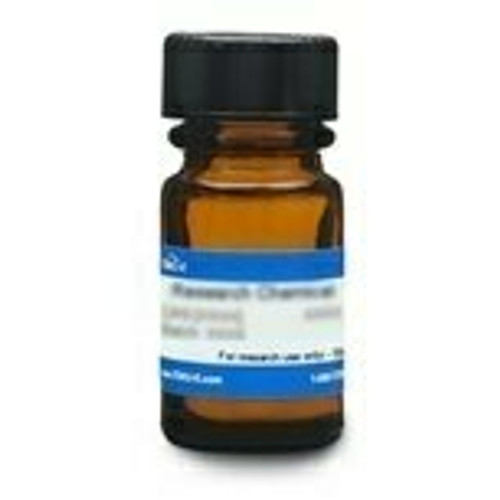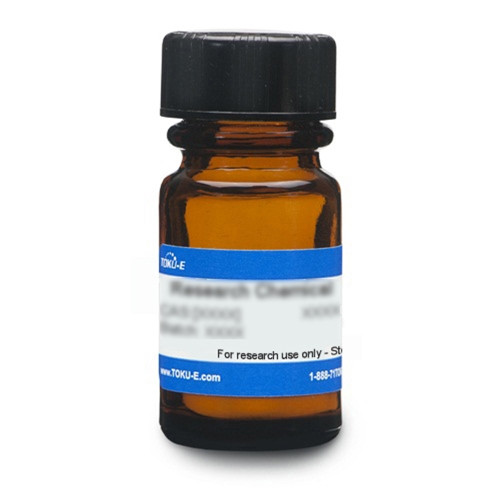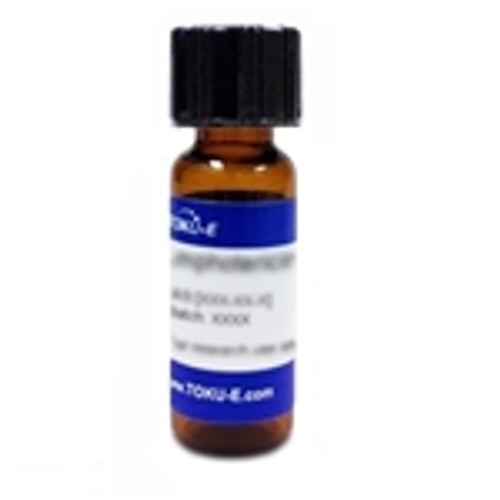Amikacin Sulfate (1:1.8), AST grade contains an Amikacin:Sulfate ratio of 1:1.8. Amikacin is a semi-synthetic, broad-spectrum aminoglycoside antibiotic derived from its counterpart, Kanamycin A. It was patented in 1971 and came into commercial use in 1976. The presence of the amino-hydroxy-butyryl group prevents enzymatic modification of Amikacin at multiple positions. This renders Amikacin a more effective decontaminating agent, as microorganisms which develop resistance to other aminoglycosides remain susceptible to Amikacin. This also gives Amikacin a broader spectrum than the other aminoglycosides currently in use. Amikacin is commonly used for veterinary research, antimicrobial susceptibility testing and studying bacterial translation.
Amikacin Sulfate, USP (1:1.8) is soluble in water.
This product has been optimized for antimicrobial susceptibilty testing (AST) applications.
We also offer:
| Mechanism of Action | Amikacin Sulfate binds to the 30S ribosomal subunit (specifically the 16S rRNA and S12 protein) resulting in interference with the translational initiation complex and mRNA misreading, which leads to a faulty or nonexistent protein. |
| Microbiology Applications | Amikacin Sulfate is commonly used in clinical in vitro microbiological antimicrobial susceptibility tests (panels, discs, and MIC strips) against Gram-negative microbial isolates. Medical microbiologists use this information to recommend antibiotic treatment options. Samples of microbes grown in presence of a 30 µg Amikacin disc with a zone of inhibition of <14 mm in diameter are considered resistant. Intermediate resistance zones of inhibition are typically 15 mm-16 mm in diameter. Representative MIC values include:
Pseudomonas aeruginosa 0.25 µg/mL -512 µg/mL |
| Eukaryotic Cell Culture Applications | In vitro studies with Amikacin demonstrate lysosomal phospholipidosis, with the compound binding to the phospholipid bilayer.
An LC–MS/MS assay was developed to quantify Amikacin in different biological matrices. This technology can facilitate future studies on improving Amikacin-associated nephrotoxicity. It would be useful for in vitro studies characterizing Amikacin uptake kinetics in renal cells, and in vivo pharmacokinetic studies (Chan et al, 2020). Contamination of cell cultures for virus isolation is problematic. Amikacin (and vancomycin ) were chosen to replace the conventionally used penicillin and gentamicin. This combination was not toxic to cell cultures remained stable in media for over six months. Virus isolation rate was maintained and contamination was reduced from 10% to 1.5%. This combination can be used for maintenance and transport media to control the emerging problem of viral culture contamination (Lo et el, 1996). |
| Molecular Formula | C22H43N5O13*1.8H2SO4 |
| References |
Chan K, Wang W , Ledesma KR, Yin T, and Tam VH (2020) A robust LC–MS/MS method for Amikacin: Application to cellular uptake and pharmacokinetic studies. Bioanalysis 12(7):445-454 PMID 32343148 Christophe T et al (2009) High content screening identifies decaprenyl-phosphoribose 2’ epimerase as a target for intracellular antimycobacterial inhibitors. PLoS Pathog. 5(10): e10000645 PMID 19876393 Davis, BD (1987) Mechanism of bactericidal action of aminoglycosides. Microbiol Rev 51 (3 ): 341-350 PMID 3312985 Dudek M, Romanowska J, Witula T, Trylska J (2014) Interactions of Amikacin with the RNA model of the ribosomal A-site: Computational, spectroscopic and calorimetric studies. Biochimie 102:188-202 PMID 24769038 Laurent G, Carlier MB, Rollman B, Van Hoof F, Tulkens P (1982) Mechanism of aminoglycoside-induced lysosomal phospholipidosis: In vitro and in vivo studies with gentamicin and Amikacin. Biochem. Pharmacol 31(23):3861-70 PMID 7159463 Lo JY, Lim WW, Tam BK, Lai MY (1996) Vancomycin and Amikacin in cell cultures for virus isolation. Pathology 28(4):366-369 PMID 9007960 Singh R, Ray P, Das A, Sharma MJ (2009) Role of persisters and small-colony variants in antibiotic resistance of planktonic and biofilm-associated Staphylococcus aureus: An in vitro study. Med. Microbiol 58(8):1067-1073. PMID 1952816 |







